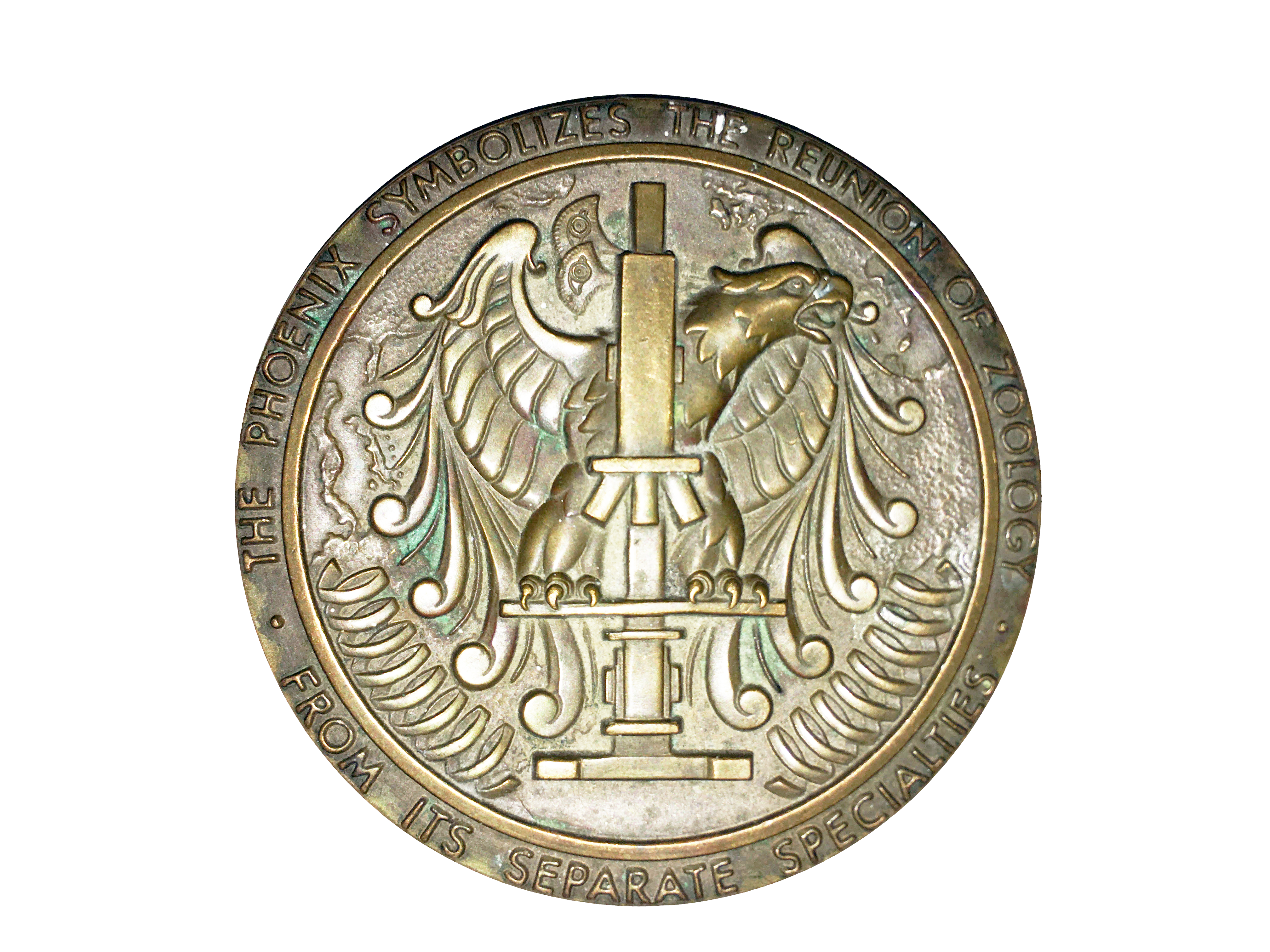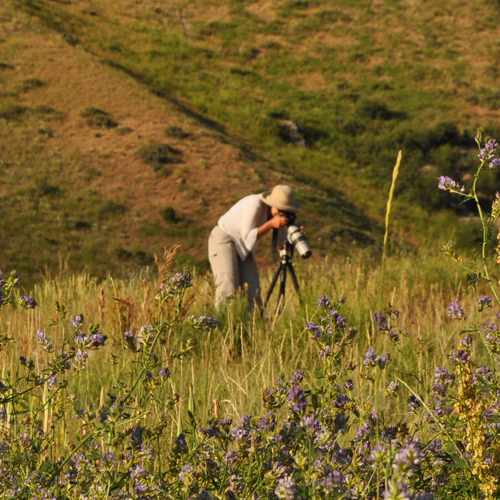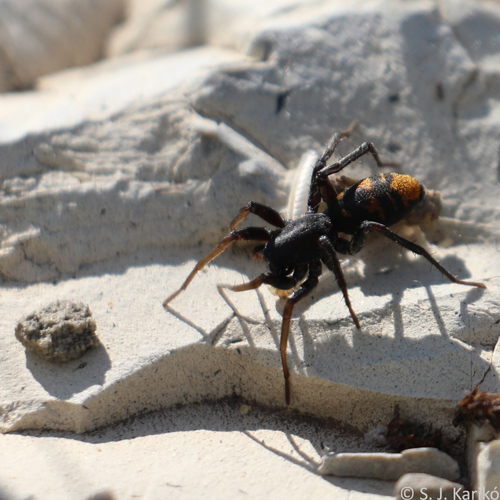Interweaving the Conference of the Birds Phoenix Festival and Spiders. Studying spiders over three decades has engaged me in a dance of wonder, beauty and grief. To continue on has taken faith and hope, grieving and moments of grace. In my experimental lecture I reflect on the destructive and regenerative powers of fire, and the strength and delicacy of silk. Spider webs offer us a way to think about our interconnectedness, as the sensitivity of each impact on the web touches seemingly distant parts. In this lecture, I also thread the gifts and lessons from my many teachers—centering a phoenix medallion gifted by my late spider mentor as a starting point for my reflections. “Fire and Silk: An Experimental Lecture” explores how creativity and sparks of inspiration from the natural world can ignite innovative ways of caring for ourselves, each other and our planet through these times.
Sarah Karikó in Conversation with Kythe Heller.
Fire and Silk: Interweaving the Conference of the Birds Phoenix Festival and Spiders. In my experimental lecture I reflect on the destructive and regenerative powers of fire, and the strength and delicacy of silk. Spider webs offer us a way to think about our interconnectedness, as the sensitivity of impact anywhere on the web can ripple out to seemingly distant parts. In this lecture, I also thread the gifts and lessons from my many teachers—centering a phoenix medallion gifted by my late spider mentor as a starting point for my reflections. “Fire and Silk: An Experimental Lecture” explores how creativity and sparks of inspiration from the natural world can ignite innovative ways of caring for ourselves, each other and our planet through these times.
![]()
Sarah Karikó in Conversation with Kythe Heller. [Still need to edit and add interview]
Bio: Sarah Karikó, Ph.D. takes an interconnected approach to exploring the complex, intertwined challenges and opportunities facing us today through research that takes inspiration from the natural world—especially spiders—and embeds the creative arts. She contributes to our scientific understanding of spiders through her research as Associate in the Department of Organismic and Evolutionary Biology at Harvard’s Museum of Comparative Zoology and explores the interconnectedness among species as Research Director of Gossamer Labs LLC. Sarah has conducted fieldwork in places ranging from the rainforests of Madagascar and Costa Rica to the Rocky Mountains in the American West. She has curated exhibits, designed interactive learning experiences and created large scale public art installations in places such as Grand Teton National Park, the Juilliard School, pediatric oncology department, Harvard’s Museums of Science & Culture and the National Museum of Wildlife Art in collaboration with partners ranging from orthopedic surgeons to the White House pastry chef. Sarah serves on the board of The Global Institute of Arts and Leadership, and is a member of the Spider and Scorpion Special Group for the International Union for Conservation of Nature. Sarah earned a PhD from the University of Kent, Durrell Institute of Conservation and Ecology, UK; Certificates in Mediation & Conflict Management and Negotiation & Dispute Resolution from Harvard Law School’s Program on Negotiation; and an A.B. from Harvard College.
Karikó, S. J. 2017. Populus tremuloides: We Are One. The Trumpeter Journal of Ecosophy, 33:1. Online at http://trumpeter.athabascau.ca/index.php/trumpet/article/view/1510
Populus tremuloides: We Are One
S. J. Karikó
Watch the deer’s ears—
are they both towards you?
Is one angled back? Look around,
see what she’s listening to,
they can sense things.
Learn to read the ears of the deer.
Listen for when birds stop calling, when
songs change, calls shriek out,
shrill across the sky.
Look where trees are torn up,
ant mounds clawed apart,
no guarantee our team will stay safe,
so look to the ones we can learn from—
watch the deer’s ears.
After the nurse was found
partially eaten and cached, to be
finished later by the mother bear,
and at least one, if not both of her cubs,
we listen on cobbled banks, our bodies
electric seeing fresh tracks
we spring at the ping of a pebble
falling on the shore.
Now, mountains disappeared for more than a week,
smoke slows me down ‘til I end up
at the clinic seeking relief—
more steroid inhalers to bring breath back in.
This smoke—
from wildfires two to three states away,
ponderosa and fir, cedar and spruce,
beetle-killed, sap-filled—exploding
across highways even lakes.
This smoke—
of young firefighters
perished in these blazes,
whose ash and spirit is mixed
with lodgepole and owl and ground
squirrel and telephone poles and their vehicles—
all traveling cross our country now
to where I sit, here, in this aspen grove.
Aspen, they are one.
Standing together, a single organism,
sharing ancient roots, some 80,000 years strong.
Aspen come back first. Need
fire to compete with conifers.
Their green-white bark
blackens around where
branches sprout out,
deer rub velvet off,
elk incise toothy lines
and young cubs climb.
These storied trunks reach all at once into thick sky,
fingerling branches entwined under a now orange moon,
leaves hanging on edge, ready to move at the slightest...
They dance—
whirling together,
on long flattened petioles,
such delicate attachments,
Populus tremuloides.
Standing just below
leaf and wind,
story and sky,
we listen for the deer’s ears
from now—until when?
At the clinic, they tell us
that even if we begin driving east today
we’ll still have two days through smoke.
I try to imagine this: our country
blanketed—while grizzly cubs are
driven to a zoo, to be
fed by humans, for the
rest of their lives
Populace tremuloides
Inspired by events while conducting field research in the Teton mountains. Written with a tender heart for the nurse, the bears, the firefighters, and all of their loved ones; and in celebration of Pando—possibly the oldest living stand of aspen trees on our planet.

Sarah Karikó in Conversation with Kythe Heller. [Still need to edit and add interview]
Bio: Sarah Karikó, Ph.D. takes an interconnected approach to exploring the complex, intertwined challenges and opportunities facing us today through research that takes inspiration from the natural world—especially spiders—and embeds the creative arts. She contributes to our scientific understanding of spiders through her research as Associate in the Department of Organismic and Evolutionary Biology at Harvard’s Museum of Comparative Zoology and explores the interconnectedness among species as Research Director of Gossamer Labs LLC. Sarah has conducted fieldwork in places ranging from the rainforests of Madagascar and Costa Rica to the Rocky Mountains in the American West. She has curated exhibits, designed interactive learning experiences and created large scale public art installations in places such as Grand Teton National Park, the Juilliard School, pediatric oncology department, Harvard’s Museums of Science & Culture and the National Museum of Wildlife Art in collaboration with partners ranging from orthopedic surgeons to the White House pastry chef. Sarah serves on the board of The Global Institute of Arts and Leadership, and is a member of the Spider and Scorpion Special Group for the International Union for Conservation of Nature. Sarah earned a PhD from the University of Kent, Durrell Institute of Conservation and Ecology, UK; Certificates in Mediation & Conflict Management and Negotiation & Dispute Resolution from Harvard Law School’s Program on Negotiation; and an A.B. from Harvard College.
Karikó, S. J. 2017. Populus tremuloides: We Are One. The Trumpeter Journal of Ecosophy, 33:1. Online at http://trumpeter.athabascau.ca/index.php/trumpet/article/view/1510
Populus tremuloides: We Are One
S. J. Karikó
Watch the deer’s ears—
are they both towards you?
Is one angled back? Look around,
see what she’s listening to,
they can sense things.
Learn to read the ears of the deer.
Listen for when birds stop calling, when
songs change, calls shriek out,
shrill across the sky.
Look where trees are torn up,
ant mounds clawed apart,
no guarantee our team will stay safe,
so look to the ones we can learn from—
watch the deer’s ears.
After the nurse was found
partially eaten and cached, to be
finished later by the mother bear,
and at least one, if not both of her cubs,
we listen on cobbled banks, our bodies
electric seeing fresh tracks
we spring at the ping of a pebble
falling on the shore.
Now, mountains disappeared for more than a week,
smoke slows me down ‘til I end up
at the clinic seeking relief—
more steroid inhalers to bring breath back in.
This smoke—
from wildfires two to three states away,
ponderosa and fir, cedar and spruce,
beetle-killed, sap-filled—exploding
across highways even lakes.
This smoke—
of young firefighters
perished in these blazes,
whose ash and spirit is mixed
with lodgepole and owl and ground
squirrel and telephone poles and their vehicles—
all traveling cross our country now
to where I sit, here, in this aspen grove.
Aspen, they are one.
Standing together, a single organism,
sharing ancient roots, some 80,000 years strong.
Aspen come back first. Need
fire to compete with conifers.
Their green-white bark
blackens around where
branches sprout out,
deer rub velvet off,
elk incise toothy lines
and young cubs climb.
These storied trunks reach all at once into thick sky,
fingerling branches entwined under a now orange moon,
leaves hanging on edge, ready to move at the slightest...
They dance—
whirling together,
on long flattened petioles,
such delicate attachments,
Populus tremuloides.
Standing just below
leaf and wind,
story and sky,
we listen for the deer’s ears
from now—until when?
At the clinic, they tell us
that even if we begin driving east today
we’ll still have two days through smoke.
I try to imagine this: our country
blanketed—while grizzly cubs are
driven to a zoo, to be
fed by humans, for the
rest of their lives
Populace tremuloides
Inspired by events while conducting field research in the Teton mountains. Written with a tender heart for the nurse, the bears, the firefighters, and all of their loved ones; and in celebration of Pando—possibly the oldest living stand of aspen trees on our planet.

Sarah Karikó takes an interconnected approach to exploring the complex, intertwined challenges and opportunities facing us today through research that takes inspiration from the natural world—especially spiders—and often embeds the creative arts. She contributes to our scientific understanding of spiders through her research as Associate in the Department of Organismic and Evolutionary Biology at Harvard’s Museum of Comparative Zoology and explores the interconnectedness among species as Research Director of Gossamer Labs LLC. Sarah has conducted fieldwork in places ranging from the rainforests of Madagascar and Costa Rica to the Rocky Mountains in the American West. She began her study of spiders with arachnologist and Alexander Agassiz Professor of Zoology Herbert W. Levi at Harvard. Her education also includes lessons learned in the horse corral of Stanford Addison, Northern Arapaho traditional healer and horse gentler, on the Wind River Reservation in Wyoming. Sarah is also a working artist leading teams to create public art and performance pieces at places such as Jackson Hole Public Art’s open air science and art museum and Harvard’s Museums of Science and Culture as well as having her artworks included in exhibits and teaching collections such as the National Museum of Wildlife Art.
